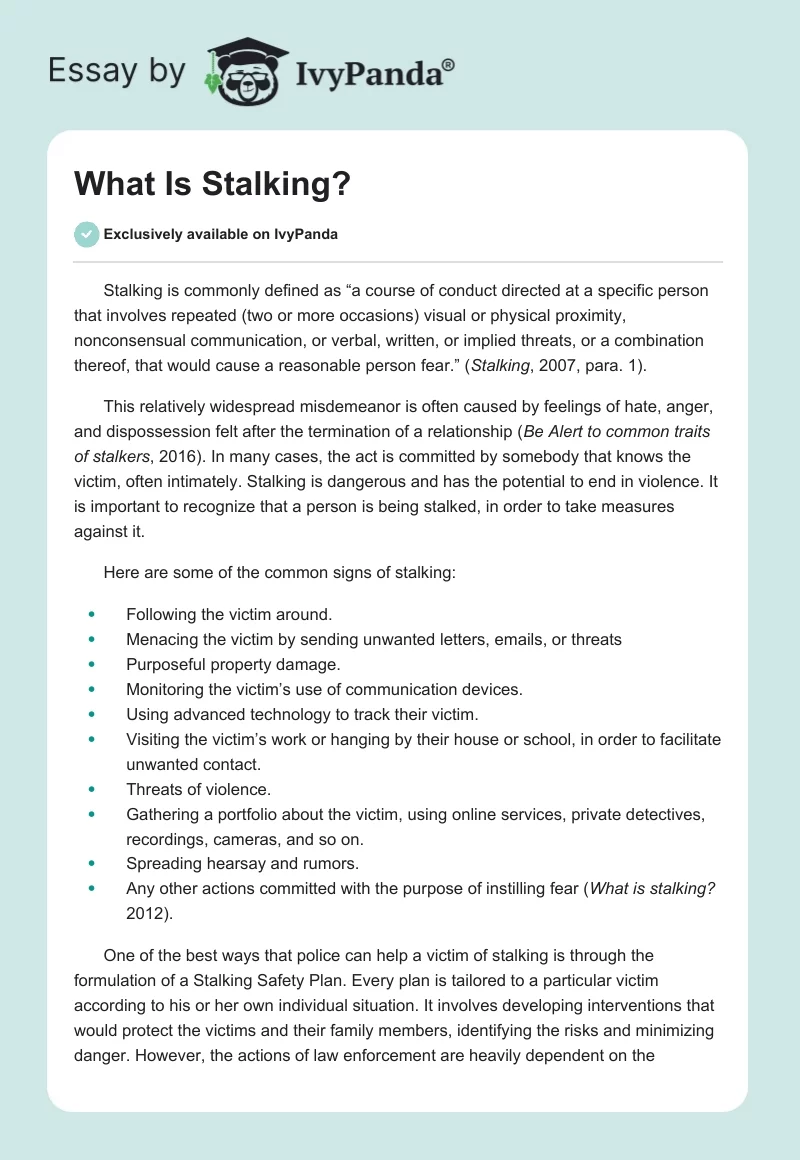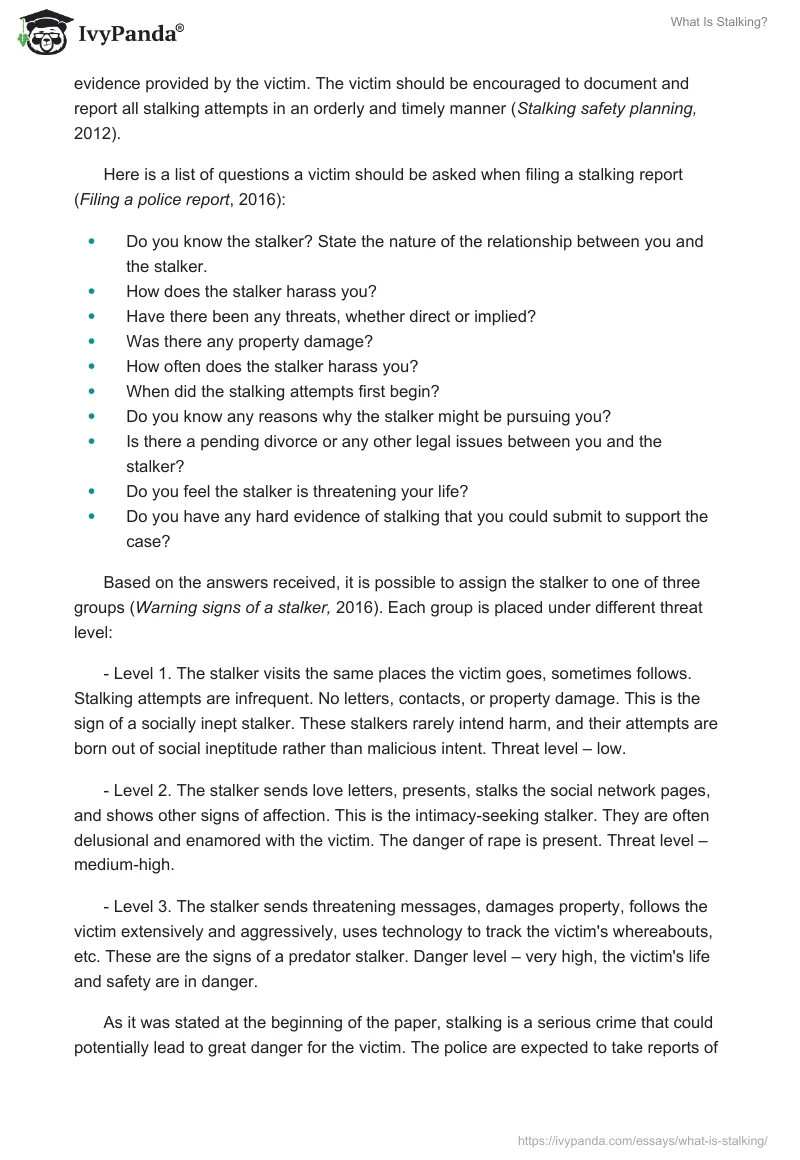Stalking is commonly defined as “a course of conduct directed at a specific person that involves repeated (two or more occasions) visual or physical proximity, nonconsensual communication, or verbal, written, or implied threats, or a combination thereof, that would cause a reasonable person fear.” (Stalking, 2007, para. 1).
This relatively widespread misdemeanor is often caused by feelings of hate, anger, and dispossession felt after the termination of a relationship (Be Alert to common traits of stalkers, 2016). In many cases, the act is committed by somebody that knows the victim, often intimately. Stalking is dangerous and has the potential to end in violence. It is important to recognize that a person is being stalked, in order to take measures against it.
Here are some of the common signs of stalking:
- Following the victim around.
- Menacing the victim by sending unwanted letters, emails, or threats
- Purposeful property damage.
- Monitoring the victim’s use of communication devices.
- Using advanced technology to track their victim.
- Visiting the victim’s work or hanging by their house or school, in order to facilitate unwanted contact.
- Threats of violence.
- Gathering a portfolio about the victim, using online services, private detectives, recordings, cameras, and so on.
- Spreading hearsay and rumors.
- Any other actions committed with the purpose of instilling fear (What is stalking? 2012).
One of the best ways that police can help a victim of stalking is through the formulation of a Stalking Safety Plan. Every plan is tailored to a particular victim according to his or her own individual situation. It involves developing interventions that would protect the victims and their family members, identifying the risks and minimizing danger. However, the actions of law enforcement are heavily dependent on the evidence provided by the victim. The victim should be encouraged to document and report all stalking attempts in an orderly and timely manner (Stalking safety planning, 2012).
Here is a list of questions a victim should be asked when filing a stalking report (Filing a police report, 2016):
- Do you know the stalker? State the nature of the relationship between you and the stalker.
- How does the stalker harass you?
- Have there been any threats, whether direct or implied?
- Was there any property damage?
- How often does the stalker harass you?
- When did the stalking attempts first begin?
- Do you know any reasons why the stalker might be pursuing you?
- Is there a pending divorce or any other legal issues between you and the stalker?
- Do you feel the stalker is threatening your life?
- Do you have any hard evidence of stalking that you could submit to support the case?
Based on the answers received, it is possible to assign the stalker to one of three groups (Warning signs of a stalker, 2016). Each group is placed under different threat level:
- Level 1. The stalker visits the same places the victim goes, sometimes follows. Stalking attempts are infrequent. No letters, contacts, or property damage. This is the sign of a socially inept stalker. These stalkers rarely intend harm, and their attempts are born out of social ineptitude rather than malicious intent. Threat level – low.
- Level 2. The stalker sends love letters, presents, stalks the social network pages, and shows other signs of affection. This is the intimacy-seeking stalker. They are often delusional and enamored with the victim. The danger of rape is present. Threat level – medium-high.
- Level 3. The stalker sends threatening messages, damages property, follows the victim extensively and aggressively, uses technology to track the victim’s whereabouts, etc. These are the signs of a predator stalker. Danger level – very high, the victim’s life and safety are in danger.
As it was stated at the beginning of the paper, stalking is a serious crime that could potentially lead to great danger for the victim. The police are expected to take reports of such offenses seriously and remain vigilant, in order to protect the victims and prevent tragedies from happening.
References
Be alert to common traits of stalkers. (2016).
Filing a police report. (2016).
Stalking. (2007). Web.
Stalking safety planning. (2012).
Warning signs of a stalker. (2016).
What is stalking? (2012).


